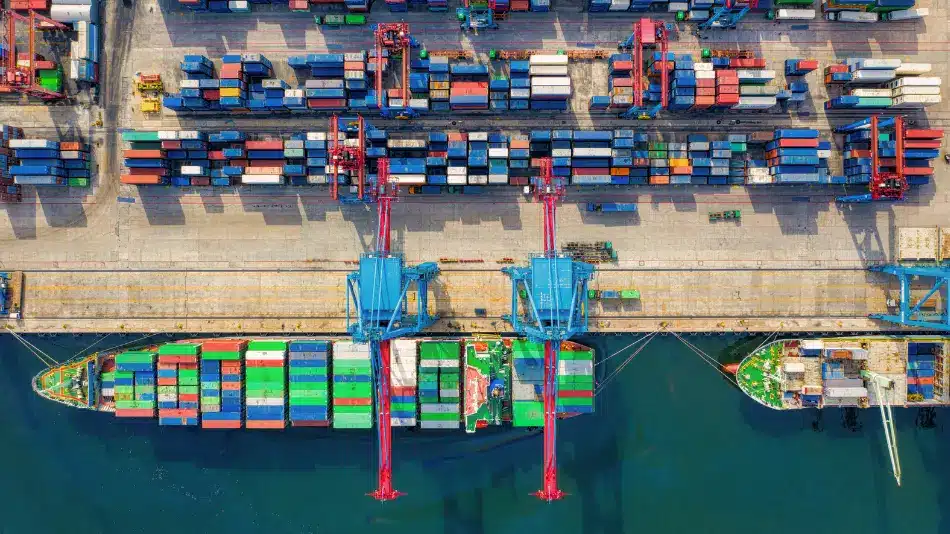As shown by the increase in stocks across the major indexes, global markets have shown surprising resilience in the face of escalating tensions between the US China. Although the increase has been positive in some areas, analysts and economists have warned that underlying economic indicators paint a more complex picture.
According to a survey of American consumers, major financial institutions are increasingly projecting a recession risk, and concerns about inflation have increased to their highest level since 1981.
Former President Donald Trump, meanwhile, has minimized the recent market turbulence, forecasting that the US dollar will appreciate and that, once the US signs new trade (us china trade) agreements with willing nations, many tariffs may level off at about 10%.
As it turns out, during his first term as president, Trump placed hefty tariffs on US China. Joe Biden, his running mate, maintained and raised these tariffs. American imports of Chinese goods fell from 21% of all US imports in 2016 to 13% last year as a result of these trade restrictions taken together.
Also Read: US tariffs will hit India’s economic growth in the current fiscal year
On February 1, 2025, former President Donald Trump issued Executive Order 14195, imposing a new 10% baseline tariff on all Chinese imports (part of us china trade), building on earlier actions. This was on top of the 20% average tariffs that had been in place during his first term. Trump raised the baseline tariff from 10% to 20% on March 4, 2025.
Most significantly, the effective minimum tariff on Chinese imports increased to 54% on April 2, 2025, when the United States added a reciprocal tariff of 34%. Capital Economics reports that the average U.S. tariff rate on Chinese goods is roughly 70%, and that the total maximum rate for products already subject to Section 301 tariffs has increased to 76%.
The yield on the U.S. 10-year Treasury notes, which moves in the opposite direction of price and is crucial for figuring out mortgage interest rates, reached a two-month high as a result of the note’s price decline. Its yield has increased by almost half a percentage point this week.
Market Reaction US China Trade War
The stock market’s initial response to the intensifying trade war was erratic and conflicting. Strong corporate earnings from US technology companies sparked a rally on Wall Street. Investor sentiment swiftly shifted, though, when China declared it would increase tariffs on US goods from 84% to 125%.
President Trump then announced a 90-day tariff suspension on dozens of countries, and effective tariffs on Chinese imports were raised to 145%. A complex perspective on trade policy and international economic relations is reflected in these aggressive actions, which have increased speculation and uncertainty in global markets.
Also Read: India and the US discussed trade facilitation issues
Deeper fears were reflected in the bond market during the US China trade war. As investors sought the relative safety of government debt, 10-year U.S. Treasury yields dropped to their lowest levels in months.
This divergence in market behaviour highlights the wider uncertainty: institutional investors are being pushed toward defensive positions by the underlying economic instability, even though short-term speculation may still Favor some stocks.
In general, the two markets are at odds as a result of the intensification of the US China trade war; while bonds are clearly warning of growing risks, stocks are displaying selective strength. In response, China has increased tariffs on a variety of US goods in a fresh round of retaliation. China’s Finance Ministry has denounced the Trump administration’s tariffs as “completely unilateral threats and coercion” in a scathing critique of the US-China trade war.
Beijing has hinted that this will be the last round of direct tariff hikes, but it has also left open the prospect of additional retaliatory actions, like sanctions or limitations on US businesses doing business in China. The gap between short-term market optimism and long-term economic concerns is still being widened by this layered uncertainty.
Trump’s Tariff Wars — Boom or Bust
The length and intensity of the US china trade dispute may hold the key to the solution. Markets may continue to rise if diplomatic channels are opened and tensions are reduced. However, a global economic slowdown could swiftly replace the current boom if hostilities intensify and supply chains become even more disjointed. There is a high-stakes economic standoff that requires caution from both investors and policymakers.


